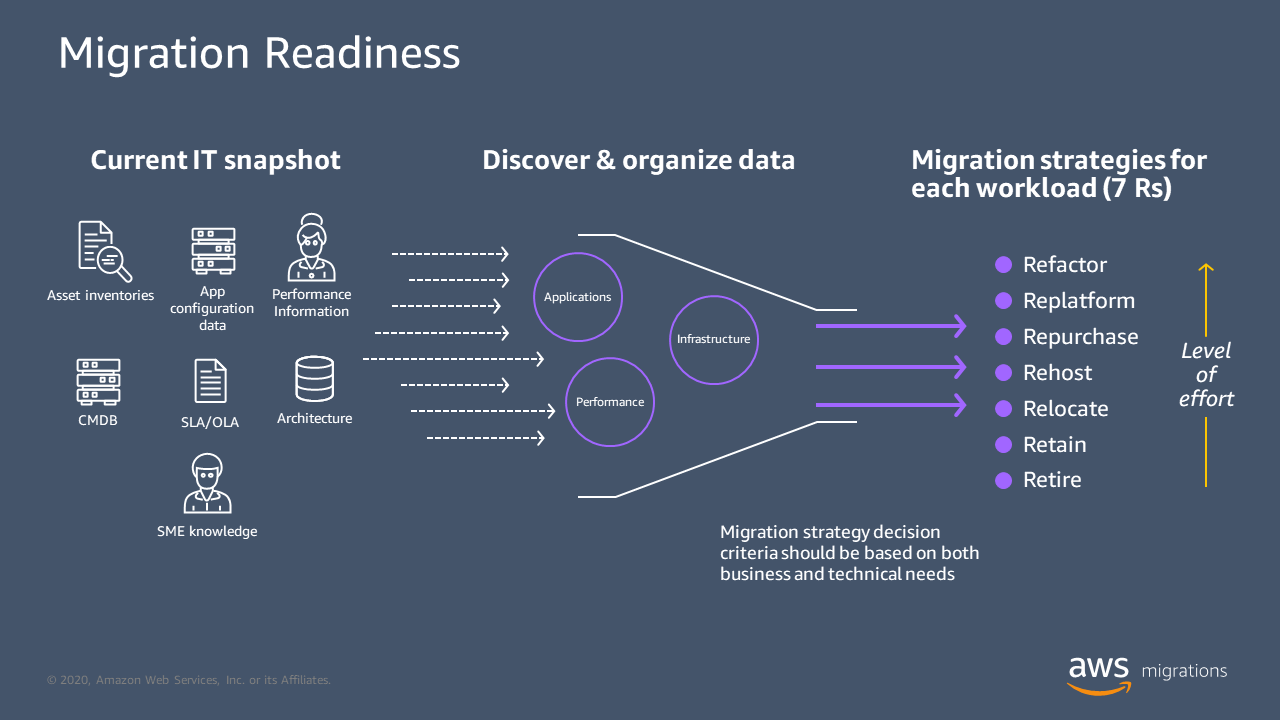There are many common cloud migration strategies that organizations use for successful cloud adoption. Your organization’s decision will likely depend on factors like business needs, technical challenges, and the desired outcome of the migration.
RehostingRehosting involves moving an application's components to the cloud with little or no modification. Essentially, you take what you have in your current environment and lift and shift it to the cloud infrastructure. This is often the quickest way to migrate, as it doesn't require changes to the application's architecture.
However, not all legacy application designs take advantage of everything the cloud environment offers. So, this cloud migration strategy may not always be the best approach for maximizing cloud benefits.
RelocatingRelocating is often referred to as lift and optimize. In this approach, you move applications to the cloud without significant changes. However, once they're in the cloud, you might transition them to cloud-centered services.
For instance, after you relocate a database to the cloud, you might migrate from a hosted virtual machine (VM) to a managed database service. This provides some benefits of cloud-centered capabilities without extensive initial refactoring.
RefactoringIn refactoring, you rearchitect applications to take full advantage of cloud-centered features. For example, you may decompose monolithic architectures into microservices or replace existing modules with fully managed cloud services. Businesses often choose this approach when they need to add features, scale, or boost performance that would be difficult to achieve in the application's existing environment.
ReplatformingReplatforming—or lift, tinker, shift—is a middle-ground approach between rehosting and refactoring. Here, you make some optimizations to the application to take advantage of cloud capabilities but not as extensively as in refactoring. You move specific components to a cloud-based service that offers advanced features with integration and customization for your use case.
For example, you might replace an older, manually intensive data management environment with an autonomous cloud database service that updates automatically and offers built-in machine learning models.
RepurchasingIn repurchasing, you move to a different product and usually abandon or replace existing software licenses for your application. For example, you could move from a traditional virtual desktop infrastructure (VDI) in your data center to a fully managed cloud-based VDI. You make the decision to purchase cloud-centered applications and retire current ones.
RetiringIn retiring, you turn off assets that you no longer require or that are outdated in the modern cloud computing environment. By comparison, repurchasing has more to do with replacing traditional assets.
When you decommission outdated assets, your organization can focus your resources and efforts on what matters most. You can save on cloud migration costs and reduce the complexity of the migration process.
RetainingIn retaining (or revisiting), you hold off on migration for some time. This might be needed for applications or workloads that have recently undergone significant upgrades or that have unclear reasons for migration. Your organization may decide to keep these applications on premises or in their current environment until there's a compelling reason to migrate.
It's important to periodically revisit and reassess these applications to determine if and when they should be migrated in the future.
